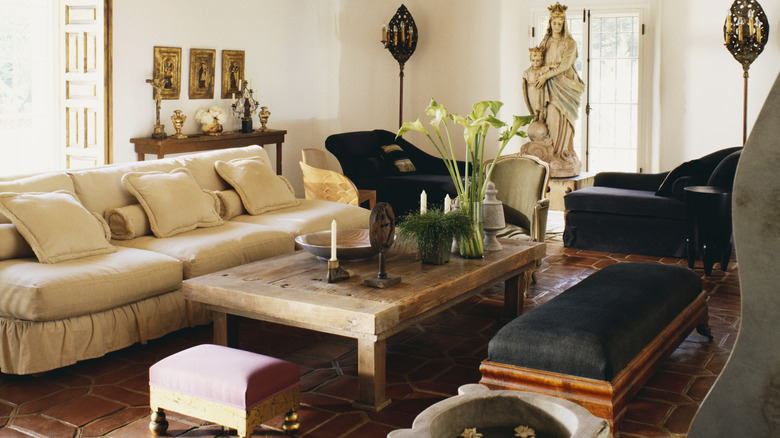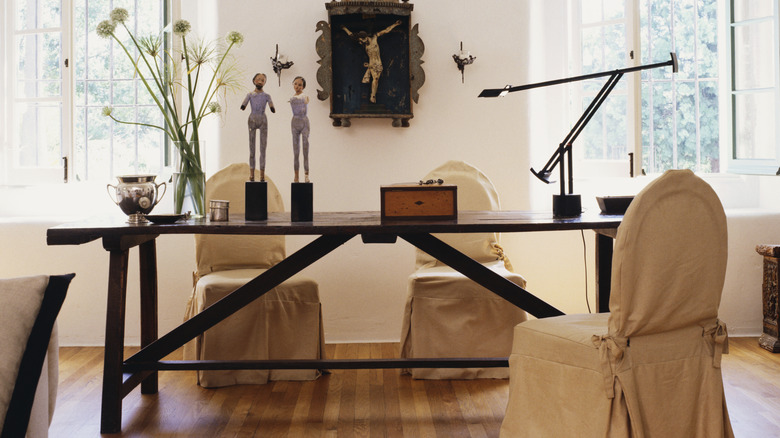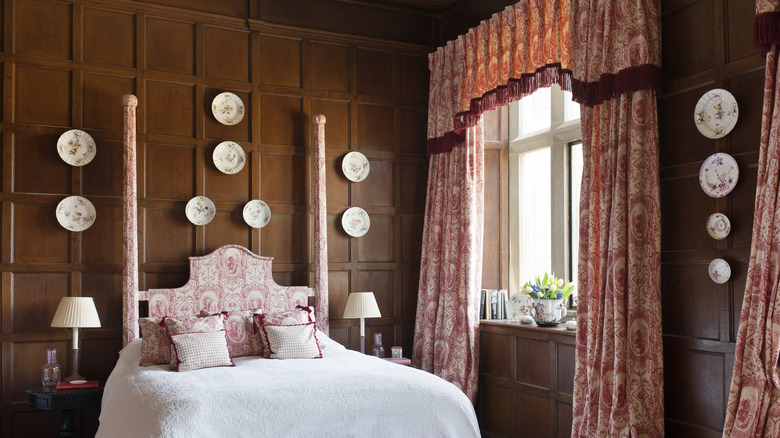Medieval Modern Is The Romantic Interior Design Trend We Can't Get Enough Of
You've heard of dark academia, cottage-core, and Japandi — well it's time to welcome a new interior design trend to the mix. Give a hand to the newest member of the pack: medieval modern. Despite seeming a bit contradictory, this trend is really the epitome of blending the old with the new. Except instead of reaching back to the 1930 to 90s as many vintage trends do, this one travels back to the time of the Crusades, the Black Death, and the Hundred Years' War. Luckily, this trend allows you to leave the terrors of the time in the past, and keep your influences strictly to design.
What is unique to this trend is that instead of solely bringing in pieces that are actually from this period (since most are either in museums or on sale for a hefty price) people are incorporating either replicas or elements from the style that are expanded upon and used in a modern way. This could mean taking inspiration from the shapes of medieval chairs, incorporating tapestry-like styles from this period, or even just finding influence in the shapes, colors, materials, and art. Adding elements of an archaic design period rather than diving in the deep end is a great way to bring this romantic and pre-renaissance feel to any home without having to live inside a massive fairytale castle.
Pull off medieval modern without looking like there's knights 'round your table
Though they are quite far apart time wise, modern and medieval interior design may be more alike than you think. Now to clarify, when people think "modern" design, many will go automatically to the trends of the current day. Contemporary design, however, is what refers to the current trends and design styles rather than a specific era. Modern design was a movement from the 20th century. Both medieval and modern styles have defining elements of organic materials and geometric shapes. However, medieval designs also incorporate some more ornate detailing in wood and tapestries — for example, consider the Gothic era. Due to many similarities, the two styles can actually blend quite effortlessly. There were also multiple style eras that exist within the Middle Ages — Byzantine, Romanesque, and the aforementioned Gothic — meaning there's a lot to work with.
So how do you decorate with a mixture of styles? One option is to bring in pieces that look like they have been plucked out of Tintagel Castle, or you can introduce the medieval vibes a bit more subtly. Try embracing the natural but stark contrasts of white fabrics and dark, heavy wood pieces, animal accents like antlers and sheepskins, or even adding in some armor-inspired elements with chainmail or iron features. Another defining element of the medieval period was the blending of rough and raw with intricate and ornate. This dichotomy of bright and dark, heavy and light, allows you the opportunity to play with visual weight and contrast.
Oddities to embrace and mistakes to avoid
One thing that you don't want to forget about the Middle Ages is that they were kind of offbeat — specifically when it came to their art. They had a very odd idea of proportions (if you have ever seen a medieval painting of a cat ... you know what we're talking about). Interestingly, that disproportionate and somewhat unsettling style is not so far removed from modern art — Picasso's "Cat Devouring a Bird" is one stellar example. The blend of whimsy and realism is something to lean into rather than shy away from when exploring this style in your home. Similar to pattern drenching, the blend of time specific pieces that align in one way or another is a fun way to dive into those era-specific trends while keeping them fresh and timeless.
One thing to be careful about with medieval decor is that too many dark, heavy, and ornate elements can take your space from moody and historic to doom and gloom. As you add in these darker, heavier pieces, be sure that you are offsetting them with lighter elements as well. Consider bright wall colors, airy curtains, and a majority of lighter, neutral fabric colors in your furniture and accessories. Making sure that you don't end up looking like the set of Camelot will not only keep your space open and bright, but it will also allow your more unique design elements to serve as conversation pieces rather than fading into the background. If you're still unsure, don't worry — there are tons of tips for decorating with mismatched furniture.


